Browse Primary Sources
Locate primary sources, including images, objects, media, and texts. Annotations by scholars contextualize sources.
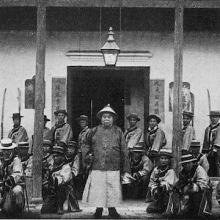
Chinese Troops during the Xinhai Revolution
Image of Chinese troops dispatched by the Shanghai daotai of the collapsing Qing Dynasty to protect Xujiahui during the Xinhai Revolution.
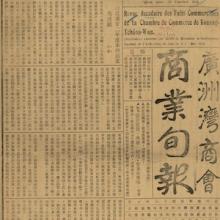
Chamber of Commerce Newspaper from Guangzhouwan, China
The image is of the front page of a newspaper (商業旬報 Shangye xunbao) published in 1934 by the Chamber of Commerce in Guangzhouwan (廣州灣商會 Guangzhouwan shanghui). Guangzhouwan was a territory on the Leizhou Peninsula in southern China that the French Republic leased from the Qing Dynasty at the end of the nineteenth century.
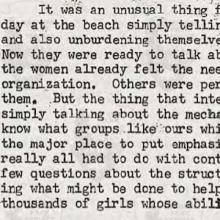
Letter to Council Women
In a 1960 letter, fourth national president of the National Council of Negro Women Dorothy Height reports back to the Council on her trip to Sierra Leone. She served as both participant and facilitator in what she described as the first meeting of West African women including Sierra Leone, Nigeria, Ghana, and Liberia.
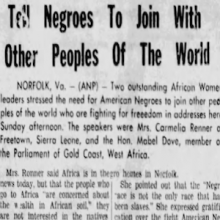
“Tell Negroes To Join With Other Peoples Of The World”
An article in the Alabama Tribune reported on the visit of two West African women leaders, Mabel Dove from Ghana and Carmela Renner from Sierra Leone. The women leaders were hosted by the Norfolk chapter of the National Council of Negro Women.
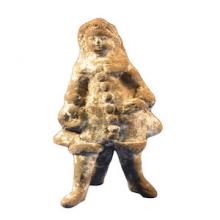
Small Terracotta Male
This figure measures only 12.4 centimeters tall. It dates from some time between the seventeenth and eighteenth century. It depicts a clothed male figure, with buttons running down the font of his outfit. It also features a stand at the back to balance the figure.
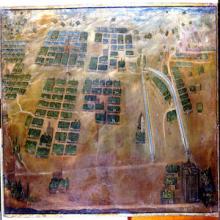
Map of the Outskirts of Mexico City
This oil-on-canvas painting depicts part of Mexico City from above. Specific author or date information does not appear on the work, but it originates sometime in the seventeenth century. It is 119 centimeters wide. Analyzing its contents reveals some aspects of daily life during this period. It depicts an aqueduct on the right side of the piece.
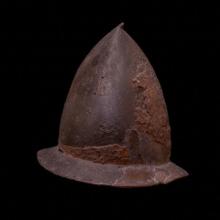
Seventeenth Century Metal Helmet
This helmet dates to the seventeenth century, and has been restored. It belonged to the Governor and Captain of the Kingdom of New León, Martín de Zavala. This territory spanned the northwest region of modern-day Mexico. Throughout the colonial period, the men who Spain appointed to run its administration often had military backgrounds.
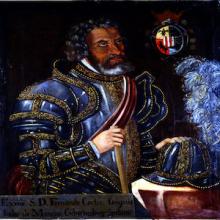
Portrait of Hernán Cortés
Hernán Cortés, a central figure in the establishment of Spanish rule in the Americas, is the subject of this painting. Throughout his career, he led several voyages back and forth between Spain, the Carribean, and Mexico.
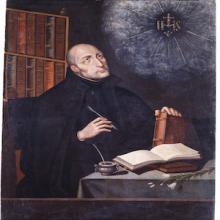
Portrait of Gaspar Sánchez
This seventeenth century painting depicts the Jesuit theologian Gaspar Sánchez. He was born and educated in Spain, but his published works were distributed throughout the Spanish world. For example, the Jesuit library of Tepotzotlán has multiple volumes. Several aspects of this artwork shed light on the identity of Sánchez.
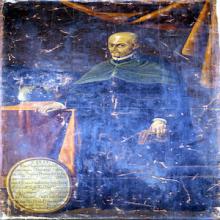
Portrait of Francisco López de Solís
This partially damaged painting depicts Francisco López de Solís, who occupied many posts throughout his career. He served as a lawyer for the Fisco del Santo Oficio, a judge on the high court of both the Philippines and Guatemala.
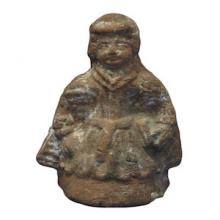
Female Terracotta Figure
This small piece measures only 9.8 centimeters tall. It depicts a clothed female figure, who appears to be wearing some kind of European-style belted dress with a collar. The Instituto Nacional de Antropología e Historia de México, which houses this piece, notes that these kinds of figures were used in Christmas decorations. It also has traces of stucco.
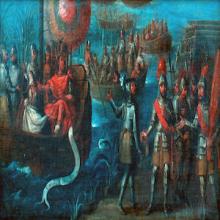
Cuauhtémoc prisionero
This painting depicts a scene from the conquest of Mexico City by Spanish soldiers (led by Hernán Cortés) in the early sixteenth century. It appears to have belonged to a larger work, but this section is all that remains. The specific events in this portion of the painting focus on the capture of Cuauhtémoc, the ruler of the Aztec people.
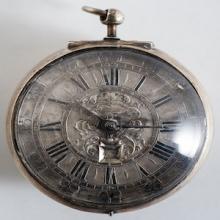
Chive Pocket Watch (Reloj de bolsillo tipo cebollón)
This object dates from the seventeenth century. It features a glass front and silver casing. The inscription reads "Tompion London," meaning that it was manufactured in England’s capital city. Tompion began producing this kind of pocket watch around 1658 with inventor Robert Hooke. Today, the piece belongs to the Instituto Nacional de Antropología e Historia de México.
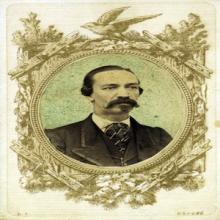
Anonymous Portrait
This image depicts an unnamed man with a mustache. It dates from approximately 1880, according to the Instituto Nacional de Antropología e Historia de México, where it resides. The exact origin of this image, or its connection to nineteenth-century Mexican life, remains unclear. However, the document leaves several clues to the identity of the subject.
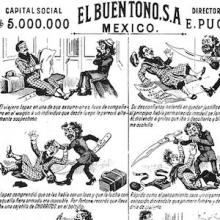
Competitive Journalism
The modern world of journalism and news is a competitive one. To attract readers, newspapers publishing in the same places try to appear unique. Some, like this edition of the New York Post rely on sensationalized headlines and lurid stories to try to catch the reader's eye.

Kodak Advertisement
When one evaluates a newspaper or a magazine as a source of information, the question of the intended audience almost always comes up. Who was this newspaper intended for? Who actually subscribes to this magazine? One way to answer such questions is through an analysis of advertisements.
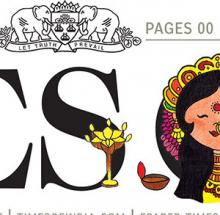
The Times of India Masthead
When approaching newspapers as a source for information, several key questions arise: When and where was the newspaper published? What kind of reader was it intended to reach? Did it have local competitors? What were its political affiliations? In other words, a newspaper's context is important to understanding the newspaper itself.
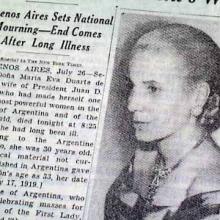
Newspaper report on Eva Peron's Death
Although newspapers are a popular way to locate facts related to a specific event, because they attempt to cover events as they unfold or before they even have all the relevant information, newspapers often include factual errors and always reflect a point of view. Newspaper reports are frequently incomplete, biased, and/or inaccurate.
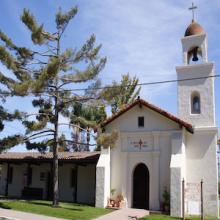
La Exaltación de la Santa Cruz Mission
Founded in 1791, the La Exaltación de la Santa Cruz Mission was a Spanish colonial church in Santa Cruz, California. The objective of this institution was the evangelization of the nearby indigenous communities. They included the following peoples: Ohlone, Costanoan, Miwok, and Yokuts.
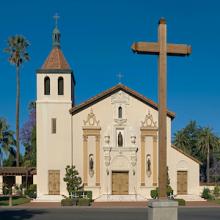
Misión Santa Clara de Asís
Located today on the Santa Clara University campus in Santa Clara University, the Mission Santa Clara de Asís was originally founded in 1777. Like many other missions nearby, it was created by Franciscan missionaries with the permission of the Spanish Crown. These institutions aimed to convert the native peoples to Catholicism and teach them Spanish ways of life.